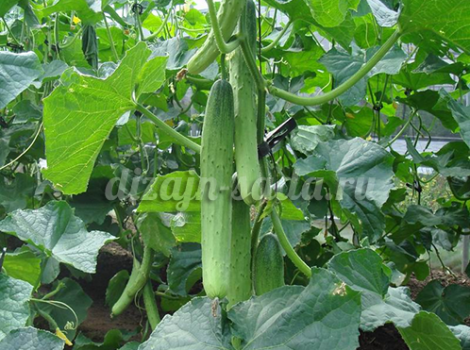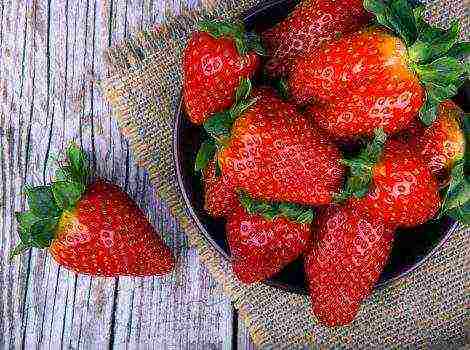Cheeses are popular in varying degrees in all countries of the world. The variety of varieties of this fermented milk product is truly amazing. In France alone, and in this country there is a real cult of cheese, there are more than 500 varieties of cheese! Hard and soft, spicy and sweet, blue cheeses and cheeses with holes, they are all prepared differently, but there are some of the most popular and beloved varieties bought all over the world. We will talk about them today.
The best cheeses in the world
Of course, tastes differ. Someone adores cheese, and someone is completely indifferent to it, but among such a variety of varieties, everyone will surely find something that they really like. In addition, it is important to know with which wine or sauce it is better to combine this or that cheese. This product is the best appetizer for wine, the French know a lot about wines and cheeses, and their most popular appetizer for wine is just cheese platter.
1. Parmesan. Everyone has heard about this Italian cheese, but not everyone has tried or even seen it on the counter. It is the hardest cheese in the world and matures between 12 and 36 months. To obtain one kilogram of Parmesan, as much as 16 liters of milk are required, but thanks to the unique Italian technology, the output is a unique cheese with a deep aroma and hints of hazelnut. A finished head of cheese sometimes weighs up to 40 kilograms, so cheese is always sold in stores already packaged. When slicing, cheese very often crumbles - it is so hard.
2. Mozzarella.This Italian young cheese is also popular with many. Traditionally, this cheese is made from the milk of young buffaloes, but in recent years, examples from cow's milk have begun to appear. Mozzarella cheese is difficult to confuse with any other, as it is sold in the form of white cheese balls soaked in brine. This cheese is very delicate in taste, it is actively used in the preparation of salads, pizza, lasagna, etc.
3. Maskrapone.And again, the cheese comes from Italy. Mascarpone is an Italian cream cheese, more like cream or soft butter in appearance and consistency. It is this cheese that is often used in the preparation of desserts such as tiramisu. It is very greasy and is often smeared on sandwiches instead of butter.
4. Cambotsola.But this is already German cheese. It is a moldy cow cheese that combines features of two cheeses: Gorgonzola and Camembert. Cambotsola is a soft cheese with a distinctive aroma and rich taste.
5. Bree.One of the most famous and ancient French cheeses. This soft cow's milk cheese with a moldy crust used to decorate the dining table of French kings, so Brie cheese was already appreciated in the Middle Ages. This cheese has always had many admirers and is really worth trying at least once in your life. Could it be love? Brie is a soft and very tasty cheese with a slight smell of ammonia. The older the Brie cheese, the spicier it is. Its aroma is quite specific, you need to get used to it.
6. Dorblu.German blue cheese, in other words - blue cheese. Contrary to the common misconception, not every blue cheese is Dorblu cheese, but in the vastness of the post-Soviet space, this mistake is very common. Dorblu is a dense and crumbly light cream-colored cheese with bluish veins. It goes well with nuts, fruits and dry red wine.
7. Camembert.French soft fat white cheese with a delicate mushroom taste and unsurpassed aroma. Made from cow's milk. It is difficult to confuse it with any other cheese, as it is covered on the outside with a white, moldy, fluffy crust, and on the inside it is soft. Today this cheese is very popular both in France and abroad.
8. Gorgonzola. A bittersweet blue Italian cheese, originally from Italy, ripens in 2-4 months.When this cheese is cut, green stripes are clearly visible on the cut. This cheese is often positioned as a dessert cheese. It goes well with red wines.
9. Roquefort.World famous blue French cheese, previously made exclusively from sheep's milk. Today it is also made from cow's milk and is highly valued all over the world, including in Russia. Top of this cheese is covered with a white shiny and slightly damp crust. Roquefort is distinguished by a bright taste of hazelnuts with a complex spicy aroma.
10. Tete de Moine.Semi-hard Swiss cheese made from cow's milk. Its name can be literally translated as "Monk's head". And the name contains the history of the origin of this cheese, because this cheese is a monastery. It was created 800 years ago in the Belle Monastery and even served as a monetary equivalent. The traditional recipe for making this amazing cheese has not changed for several centuries. It is also not customary to cut it, but only to scrape it off. Tête de Moine goes well with dry white wine.
11. Cabrales.Semi-hard Spanish blue cheese, made in unique conditions, namely in the caves around Cabrales. It goes well with young red wine.
12. Cheddar.Cheddar is a cheese loved by chefs from all over the world. This is a bright English hard cheese made from whole milk with a nutty, slightly spicy and sour taste.
13. Gruyeres. A hard yellow Swiss cheese with a pungent spicy aroma and nutty taste. Depending on the ripening time, Gruyère tastes differently. Young Gruyère is called “soft” and matures within 5 months, “semi-salty” Gruyère matures for 8 months, “salty” - 10 months, “premium” - more than a year, “old” - from 15 months.
14. Conte. The famous semi-hard French cheese, made exclusively from the milk of the following breeds of cows - Simmental and Montbéliard. This cheese ripens within 8-12 months. Conte cheese is distinguished by a pronounced sweetish nutty taste, but each cheese head has its own unique flavor. This is due to the different manufacturing conditions as well as the seasons. In total, there are 90 shades of Conte cheese, and 6 main tastes: fruit, milk, roasted, spicy, herbal and animal. This cheese is one of the most loved in France, it is served both as a separate dish at the end of a meal, and as an ingredient in other dishes. Conte cheese goes well with any wines.
15. Emmental. Semi-hard cheese originally from Switzerland. It is distinguished by a spicy, spicy-sweet taste, large cavities inside the head of cheese (holes). This cheese is freely produced in many countries of the world, so if you see a cheese with this name in a store, it does not mean that it comes from Switzerland.
Have you ever tried any cheese from the list above, and did you like it?
You may also be interested in
There are many such dishes and products in the world that are worth trying so as not to feel that life has been lived in vain. Cheese is a separate category for gourmets. There are countless cheeses, but it is generally accepted that 10 of the most delicious were chosen from them, which are produced in different parts of the world.

Mascarpone is an Italian cream cheese with a rich flavor similar to cream and yogurt. 100 g contains on average 453 Kcal.
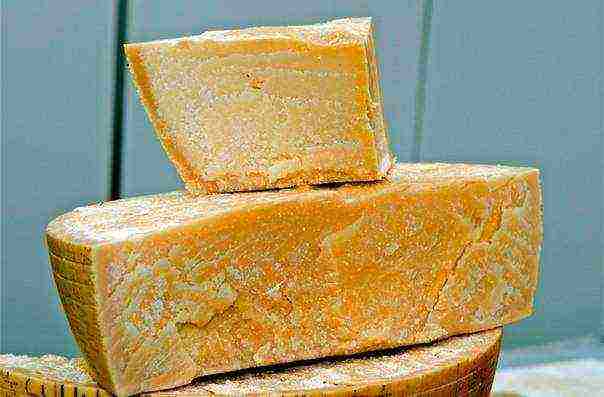
Parmesan is hard, brittle, pungent in taste. It needs to be cut into the finest slices, and there is - with pears and walnuts. Parmesan is added to pasta, risotto, omelettes. 100 g contains an average of 392 Kcal.
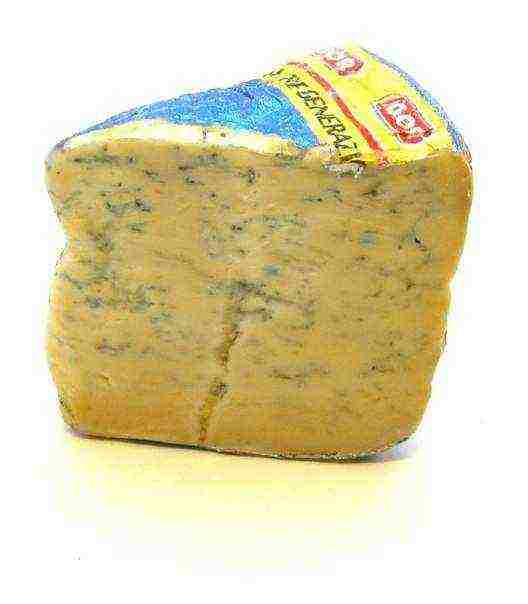
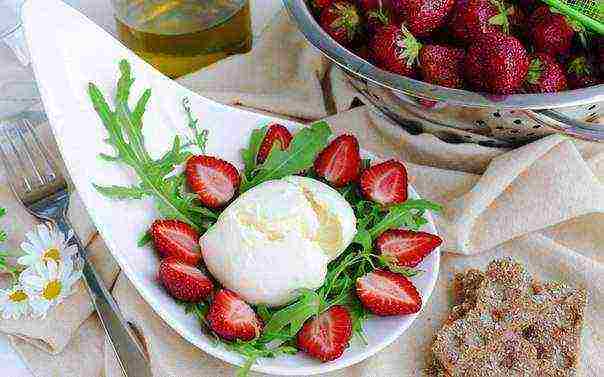
Mozzarella is a cheese made from buffalo milk. This cheese goes well with tomatoes, basil and olive oil. You can add some more black pepper. 100 g contains on average 250 Kcal.
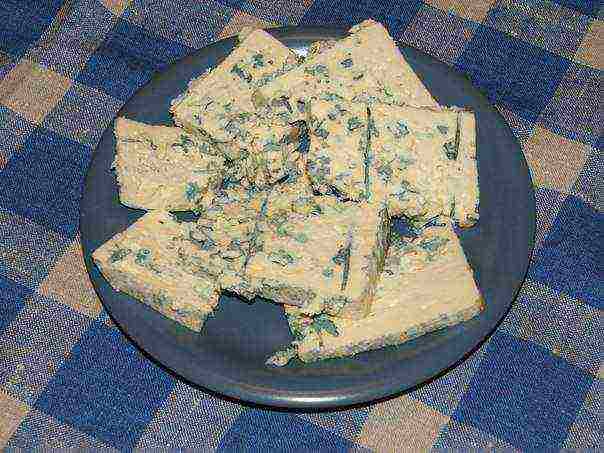
Dor Blue is a German blue cheese. It is best eaten with nuts and grapes. If you eat several types of cheese at the same time, this variety is best left for last. 100 g contains an average of 354 Kcal.

Brie is an old French cheese. Cheese of the kings. Its taste, depending on the variety and timing of ripening, varies from mushroom to fruity. Fruit and brie are the best combination. 100 g contains on average about 330 Kcal.
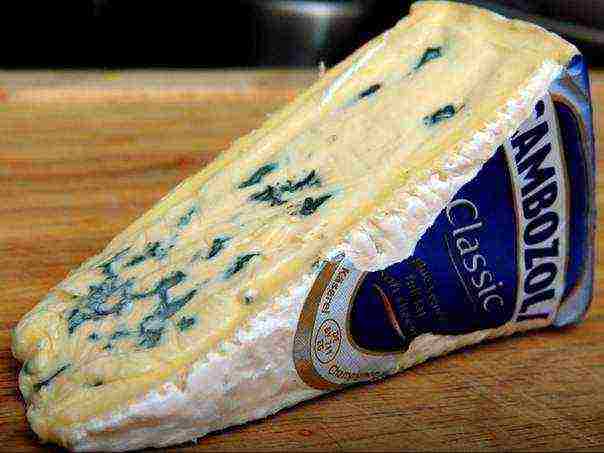
Cambozola is a German moldy cow cheese whose producers have managed to combine the features of French soft cheeses and Italian Gorgortsola. Vku is similar to Camembert, however, due to mold inclusions, it is more intense and sharp. It is better to serve fruit (for example, melon, grapes or pear) with this cheese. To fully understand the delicate taste of Cambazola cheese, you need to let its aroma fully unfold. To do this, put the cheese on a plate one hour before serving. 100 g contains on average 427 Kcal.
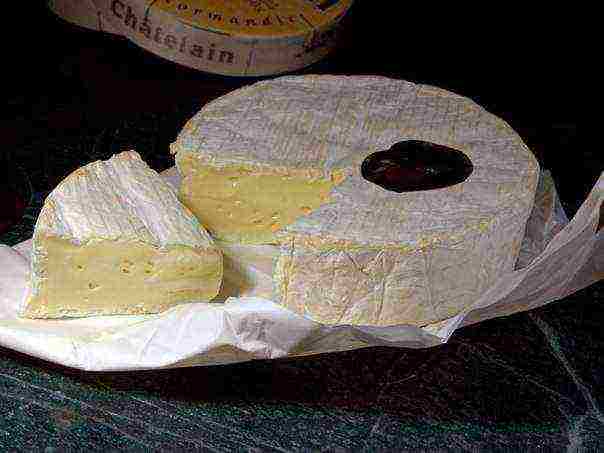
Camembert is a soft cheese made from cow's milk. Brie and Camembert are similar, but brie is slightly less greasy. An average of 100 g contains about 300 Kcal.
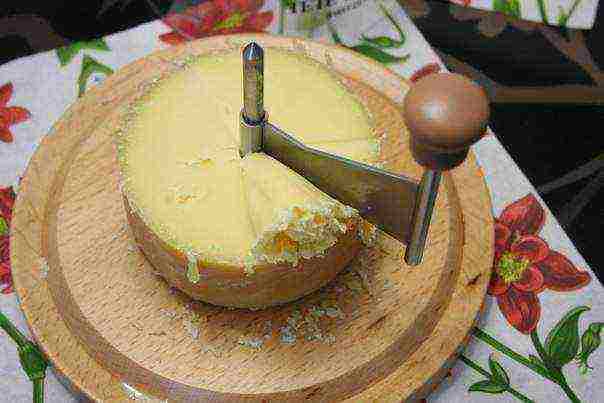
Tete de Moine - refers to the exclusive Swiss cheeses. Translated from French, its name means "monk's head". Tête de Moine is made from cow's milk, obtained exclusively during the summer months. Ripens more than three months. The finished cheese is homogeneous on the cut and has a dense texture. It has a very strong aroma and a pronounced pungent taste. Good with white wines. 100 g contains an average of 410 Kcal.

Roquefort is the famous French blue cheese. Roquefort goes well with wines: Cahors, Sauternes, Porto. 100 g contains an average of 335 Kcal.
Related links:
If you love cheese, then you have probably already tried many different varieties. What cheeses are the most demanded and popular? Find out and be sure to try what you haven't tried yet!
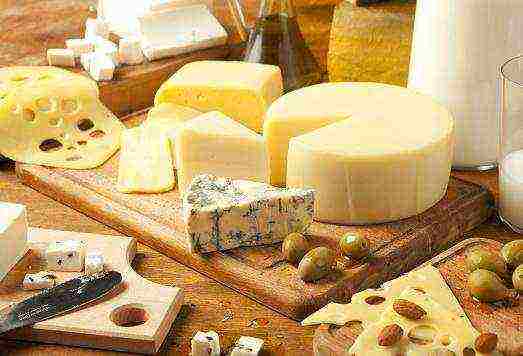
The most popular and delicious cheeses
We bring to your attention the top 10 most delicious cheeses in the world:
1. Mozzarella - delicious and delicate cheese originally from Italy. Traditionally, it was made from buffalo milk, but today the stores sell mozzarella from cow's milk, which is familiar to everyone. Such cheese looks like white balls of small diameter, soaked in a weak brine.
The product is soft and very delicate, with a pleasant taste. When preparing such cheese, milk is first fermented with a special thermophilic lactic acid culture. Then it coagulates thanks to rennet. After that, the whole composition is heated, and the whey is separated.

Then this mass is thoroughly and actively kneaded, periodically dipping it into hot water, until a homogeneous viscous mass is formed. Then balls, cubes, pigtails and much more are formed from the finished mass. The finished cheese is placed in a solution in which it is stored. The shelf life is short, so it's best to eat the Mozzarella as soon as possible. This cheese, by the way, can be added to salads.
2. Maskrapone. This cheese looks more like delicate creamy cottage cheese or even yogurt. It tastes incredibly delicate, slightly sweetish. The consistency of the product is more like a curd mass.
The homeland of such a product is Italy (in this country, incredibly tasty cheeses are generally made). To prepare Maskrapone, cream with a fat content of 25-30% is first heated in a water bath to about 80 degrees, then lemon juice, wine vinegar or tartaric acid are added to curdle milk protein.
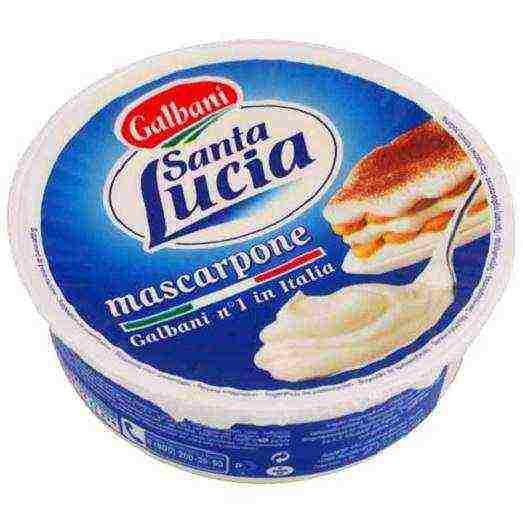
After that, the mass is heated, then cooled and placed in nets to remove serum. You can't call such cheese a dietary one, but it is incredibly tasty. Desserts are often made from it, the most popular of which is tiramisu.
3. Bree - a delicate and soft cheese made from cow's milk, originally from France. Previously, it was available only to kings and the rich, but today everyone can taste it. Cheese is a flat cake with a thickness of 3 to 5-6 centimeters and a diameter of 30-60 centimeters.

Such a cake is covered with a noble white mold that resembles white velvet (it is quite edible). The smell has an ammonia tint.The taste of this cheese can vary from fruity to pronounced mushroom (it all depends on the aging of the product). Brie is similar in consistency to processed cheese. It is best served not cold, but at room temperature. Brie is considered a versatile cheese as it pairs well with a variety of drinks and foods.
4. The list includes Parmesan... It is a hard cheese with a long maturation. Some believe that the recipe was presented to the world by monks in 1200, since then nothing has changed. The cheese is so hard that it can crumble when sliced. It tastes at the same time moderately spicy, salty, piquant and tender. Manufacturing technology is complex, and the maturation process is very long.
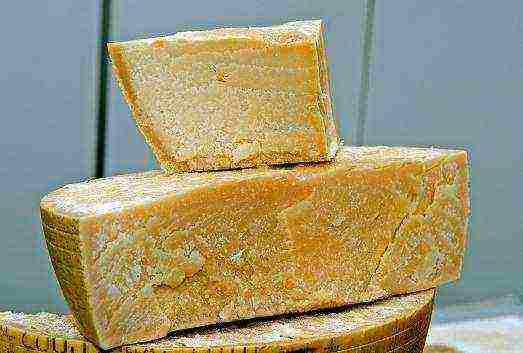
To obtain 1 kilogram of cheese, it usually takes about 16 liters of milk, and maturation can take from one to three years. The older the product, the more pronounced the hazelnut flavor.
In the homeland of cheese, which is Italy, there are special people who determine the maturity of Parmesan with silver hammers (they are called rumors). After a year of aging, the cheese is checked. Some are rejected, branded and removed (such a product may go on sale, but under a different name), and some are sent to mature for at least another year.
5. Cambotsola... It is made by the best cheese makers, the homeland of the product is Germany. In general, this is a German blue cheese that combines the qualities of the Italian Gorgonzola cheese and the French Camembert (the name, by the way, appeared by combining the names of these two varieties).
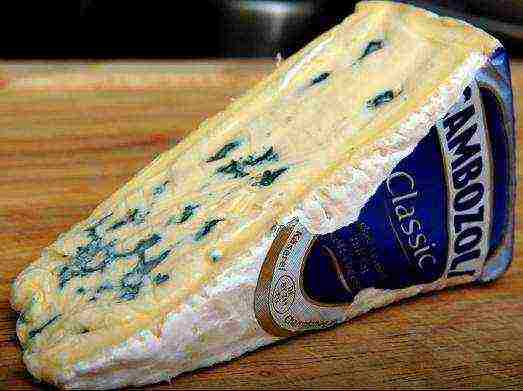
Such a product was patented by one of the German companies in the 70s of the last century. For the production of this cheese, a special specially prepared mold is used, and the softness and tenderness of the consistency is achieved by adding cream. The result is a delicate and tasty cheese with moderate pungency. It is best to eat such a product with fruits and after the disclosure of the aroma (for this, it is better to use it an hour after cutting).
6. Camembert - tender French cheese with a fluffy white mold crust. It tastes delicate and has mushroom notes. Camembert is prepared from whole milk. For coagulation, rennet is used.
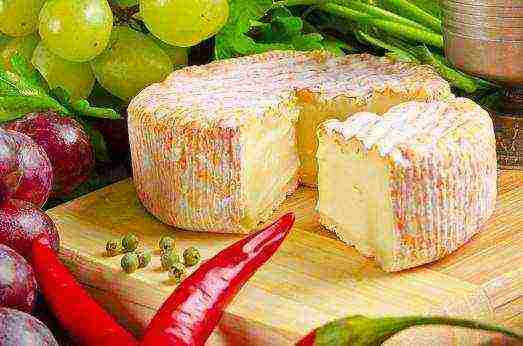
In the process of folding, the mass must be stirred periodically. Then the composition is moved into molds and dried in a special way (this requires the skills of experienced cheese makers), and then salted. Then the cheese will ripen under certain conditions until fully cooked.
7. Dor Blue - blue cheese with mold originating from Germany. For a long time, this cheese was practically the only one of its kind, available for sale in some countries (including the former CIS countries). The recipe was developed especially for lovers of moderately spicy and savory cheeses.
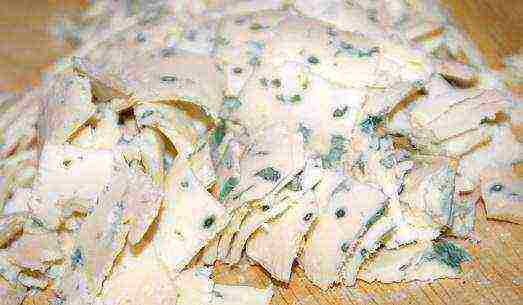
The composition itself and the peculiarities of preparation are still kept secret by cheese makers, but it is known that special molds are used, as well as cow's milk. This type of cheese is best combined with grapes and nuts. If there are several varieties on the table at once, then it is better to leave Dor Blue for last.
8. Gorgonzola... Guess where he comes from? That's right, from Italy. This variety is quite popular and has a tart, moderately spicy and piquant taste. This product belongs to blue blue cheeses.

For production, cow's milk is used, to which penicillus fungi are added (they are injected with syringes) and special enzymes. Throughout the ripening process, which takes from 2 to 4 months, special metal rods remain in the cheese, providing access to the oxygen necessary for the life of the fungi.
9. Tete de Moine... The name of this cheese literally translates as "monk's head". And it was the monks who were the first to prepare this product. The homeland of cheese is Switzerland, it is exclusive and very expensive. For production, the freshest cow's milk of summer milk yield is used.
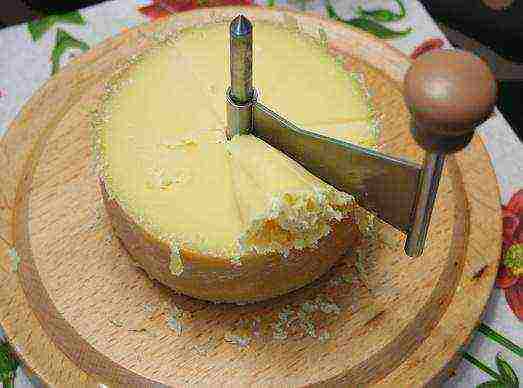
The cheese ripens for at least 70-80 days in wet cellars on spruce boards.During the maturation process, the heads are sprayed with a special saline solution with the addition of live bacteria. The result is a cheese with a yellow flesh, a dense texture and a brown crust.
10. Roquefort. This cheese belongs to blue varieties and is produced in France. Initially, this product was prepared from sheep's milk, but today cow's milk is also used. Milk is fermented, the mass is cut and laid out in forms and salted. An important feature is maturation on oak shelves in a limestone grotto under conditions of sufficient ventilation.
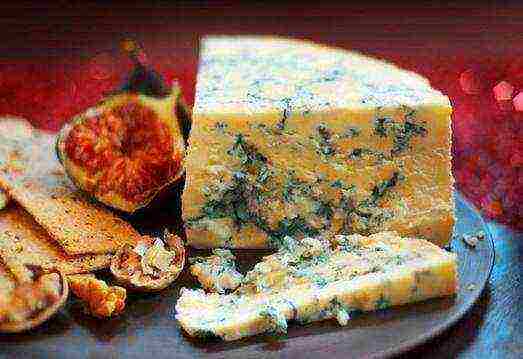
Here are the tastiest and best cheeses in the world. Which one will you try first?
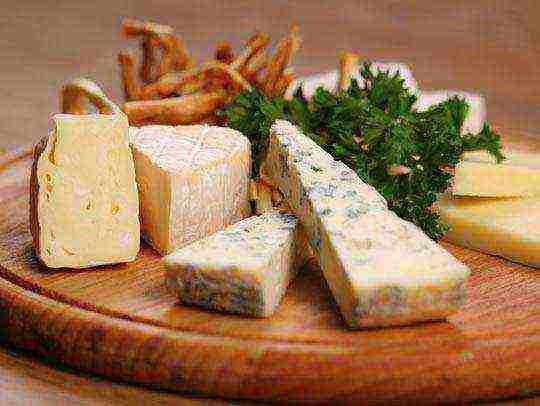 BUT
BUT
Adyghe is a soft whey cheese with a sour milk taste and a curdled texture.
Almette is a fresh (cottage cheese-like) German cheese with additives - herbs, garlic.
Alpidamer is an Austrian semi-hard cheese with very large holes.
Alpinland is an Austrian semi-hard cheese in a yellow waxy shell, with a very delicate taste.
Alpzierler is an Austrian semi-hard cheese with a red crust.
Amadeus is an Austrian semi-hard cheese of bright yellow color in a white shell with a relief image of a cross.
Aperifre is a fresh, cottage cheese-like cheese that is made in the form of small circles that are convenient to prick with a skewer. Aperife is served with aperitif drinks.
Aceda is a Swedish hard cheese.
Athlete - Estonian hard cheese with a sour taste.
B
Backstein (Limburgskiy cheese) - translated from German - ‘brick’. A soft cow's milk cheese with a characteristic aroma, invented in Belgium, is now especially popular in Germany and Austria. A. Pushkin in ‘Eugene Onegin’ called this cheese ‘alive’, apparently because of its strong smell. Baltios is a Lithuanian hard cheese.
Banon is a small round soft French goat cheese, it is sold necessarily wrapped in chestnut leaves. Legend has it that the Roman emperor Anthony Pius (86-161) allegedly became so addicted to this cheese that he died of indigestion after eating too much of it once.
Protein (Belok Abbey cheese) is a sheep's cheese from France, the recipe of which was invented by Benedictine monks in the 19th century. Has a characteristic pungent taste, the French say that it gives off both burnt sugar and a long-cooked meat stew at the same time.
Böhle is a French blue cheese (moldy) made from cow's milk, with a spicy salty taste.
Ble de Cos is a French cheese (moldy) made from cow's milk from various breeds. It is often referred to as 'cow's milk roquefort'.
Blue is a French ‘blue cheese’ (moldy) made from cow's milk from various breeds. The most expensive variety in the UK.
Blue Gotland is a hard cheese made from cow's milk, which is produced on the largest island in Sweden, Gotland. It is always packed in a dark blue shell.
Bonalpi is a semi-hard Austrian cheese.
Beaufort is one of the noblest and most famous French hard cheese made from cow's milk. The circle of this cheese (from 20 to 70 kg) can be easily distinguished from any other: it always has concave edges (when ripe, a special hoop is put on its sides).
Bren d'Amour is a sheep's cheese from Corsica, its name translates to 'a little love'. Its crust, under which the tender pulp is hidden, is sprinkled with herbs - savory, rosemary and juniper.
Brie is one of the oldest French cheeses, soft, with a spicy taste, covered with a light mold crust, always small in size. It is called the ‘cheese of kings’. After the Great French Revolution, brie was hailed as the cheese of the people. One revolutionary wrote: 'The brie cheese, so beloved by the rich, is now loved by the poor too. He has become a symbol of equality between rich and poor '. Brie belongs to the most famous French cheeses, inextricably linked with the history of the country. I'd like to start with a legend, although it's not very funny. They say that the addiction to cheeses of King Louis XVI, who was reputed to be a great gourmet, played a fatal role in his fate.Fleeing from the revolutionary crowd in 1789, Louis could not resist the temptation to look at a farm in the town of Varennes very close to the town of Meaux, where the best brie was made. While tasting the cheese, Louis was recognized, captured and later escorted directly to the guillotine. So in France people died not only for metal, but also for cheese. It so happened that brie has always been known as the cheese of kings. Blanche of Navar, Countess of Champagne, used to send brie as gifts to King Philip Augustus, who was delighted with it. With the onset of Christmas, the ladies of the court always looked forward to gifts from Charles d'Orléans, and that gift was a fresh brie. Queen Margot and Henry IV were reputed to be great lovers of brie. Even the glutton Gargantua (even if he did not belong to the royal family), the hero of the famous novel by François Rabelais, gave brie to his parents. There are three varieties of brie, named after small towns to the east of Paris: Brie de Meaux, Brie de Melun and Brie de Coulomiers. Last all
more often referred to simply as ‘coulomier’, recognizing its right to be a separate type of cheese. 1980 marks a milestone in the history of Brie: this year, it deservedly received its original controlled name. They say that Brie was very much loved in Russia of the Pushkin era. Now it can also sometimes be bought in central Moscow supermarkets. Expensive, but what a delight!
Broccio is the national cheese of the inhabitants of Corsica made from sheep's milk. It has the shape of a flattened ball covered with a creamy moldy crust. Broccio has been known in Corsica since ancient times, when sheep were raised on the island. This cheese has become a kind of national treasure of the Corsicans, like pasta for Italians. Broccio is said to have the same hot temper and tough temper as any Corsican. Brocchio is a flattened ball with a cream-colored crust on top. The taste is pronounced and spicy. The ripening of the cheese takes place in molds woven from cane. It is the only French cheese of the 'original controlled name' made from digested whey. The rest of the cheese mass is used to make hard sheep's cheese of the 'tom' family. In order to make 1 kg of broccio, you need about 11 liters of sheep's milk. The Corsican breed of sheep produces a lot of fat milk, perfect for broccio production. For ripening, the cheese is wrapped in tree leaves and laid out on wooden shelves in the cellar. Periodically, the cheese needs to be turned over and wiped. Ripening time is a matter of taste. Within two weeks, the young cheese is ready to eat. In Corsica, they prefer to eat young cheese, so only 15% of broccio finally ripens.
Cheese is a cheese made from sheep's milk, sometimes from a mixture of sheep's milk and goat's milk, aged in brine.
Boulet d'Aven is perhaps the most ‘smelly’ of French cheeses in the shape of a white or reddish cone.
B
Valance - French goat cheese in the shape of a pyramid, sprinkled with wood ash. It is said that for the first time this cheese of such an unusual shape was made in honor of the return of Napoleon Bonaparte with a victory from the Egyptian campaign. Valance cheese is the hallmark of the ancient French province of Berry - like many other goat cheeses from the area (Puligny Saint Pierre, Levroux), it is shaped like a squat pyramid weighing 220 grams. There are many legends associated with this form. They say, for example, that for the first time this cheese was made in the form of a pyramid in honor of the return of Napoleon Bonaparte with a victory from the Egyptian campaign. There is another legend according to which the peasants wanted to repeat the shape of the bell tower in the cheese, located in the village of Valence. Valance is also interesting because it is sprinkled with wood ash. Berry believes this is the best way to preserve the flavor of goat cheese. Valence is made in summer and autumn when goats feed on fresh grass.To ripen, the cheese is placed in a well-ventilated drying oven for 4-5 weeks, where it gradually becomes covered with a thin blue skin. Under the crust there is the most delicate pulp, slightly sweetish and giving off hazelnuts. Hazelnut flavor mixed with wood ash scent stays in the mouth for a long time. It is believed that the local white wine sancerre goes best with Valance. However, nothing prevents you from trying this cheese with other wines, which the central regions of France are so rich in (Coteaux du Vendomois, Cheverny, Chinon, Bourgueil, Saint-Nicolas, Touraine, Touraine-Amboise, Vouvray, Montlouis, Touraine-Mesland, AOC Touraine , Reuilly, Quincy, Menetou-Salon). Valance, while the last of the French cheeses, has been honored to have an ‘original controlled name’. This happened in 1997.
Valmont is a French blue cheese (moldy) made from cow's milk, with a spicy salty taste.
Vityaz is an Altai hard cheese similar to Russian.
G
Gouda is a bar-shaped Dutch hard cheese made from cow's milk. The most widespread cheese in the world.
Germantas is a Lithuanian hard cheese.
Dutch is a hard cheese with a slightly spicy taste.
Gorgonzola is an Italian blue cheese made from cow's milk. It can be of two types: natural (or mountain) and sweet. Mountain cheese has a very strong aroma and a pungent, deep taste.
Grana is the Italian name for parmesan, derived from the appearance of grated cheese - granules.
Gruyere is a Swiss hard cheese in the form of huge heads with a dark crust.
D
Damtaller is a Dutch hard cheese.
Dvaro is a Lithuanian hard cheese.
Home with
yr is a Soviet product. Cheese with a grainy texture and a sour-salty taste.
Duo is a processed German puff cheese with layers of nuts or salmon.
F
Gervais is a French soft cheese. Usually made from cow's milk with the addition of cream.
Z
Zbrinz is a Swiss hard cheese.
AND
Illerthaler is a German hard cheese with holes the size of a cherry and a nutty flavor.
TO
Camembert is a French soft cheese with a pungent aroma, covered with light mold. According to legend, the cheese maker Maria Artel named him so in honor of the cheerful corporal Camembert, the hero of a popular fairy tale. It is known that Camembert was Napoleon's favorite cheese.
Cambotsola is an Italian soft gourmet cheese with white and blue mold.
Cancoyott is a low-fat processed French cheese.
Cantal is a French cheese made from cow's milk in the form of a large circle with a thick golden rind with mold and tender pulp.
Kare is a French soft cheese topped with an edible white crust that is less fatty than brie.
Cacioricotta is a smoked and saltier variety of Italian Ricotta cheese.
Kashkaval is an Italian semi-hard fibrous cheese.
Qibille is a Swedish blue (moldy) cheese.
Coeur de Chevre is a region of Poitou-Charentes located in the west of France and facing the Atlantic and has always been famous for its goat cheeses. 'Coeur de chevre' means 'goat heart'. It is made in the shape of a small heart, weighing about 150 grams. There is no gallant history associated with this original form - it is just that Poitou cheesemakers traditionally adopted this form for goat cheese. A real peasant ker de chevre is obtained from the milk of a local goat breed that feeds on the luscious grasses of the fertile Poitou valleys. Depending on the ripening period, the pulp can take on different shades - from pale white to bluish. The cheese is very tender and non-aggressive. Small grains are found in the pulp. Coeur des chevres is usually served wrapped in a chestnut or sycamore leaf. So it looks like a precious gift created by nature itself, the purpose of which is to bring true pleasure.
Conte is a French hard boiled cheese with a pale yellow pulp and a brown-golden hard crust. Conte, made in summer, exudes a fruity aroma, and made in winter, a scent of hazelnuts.Kostroma is a domestic hard cheese.
Coulommierre is a French soft cheese with a white mold crust.
L
Layol is an extremely aromatic French hard cheese, slightly sour in taste. On each of its heads, the image of a bull is necessarily applied, which is the unofficial symbol of this cheese.
Langres is a French cheese made from cow's milk with a pungent smell and pungent taste. When ripe, it is never turned over, so in the upper part it has a depression where gourmets pour grape vodka or champagne.
Larzac is a French sheep's sweet and salty cheese, which is sold in earthenware cups.
Latvian - semi-hard cheese.
Leerdammer is a Dutch hard cheese with large holes.
Le Lerain is the most expensive cheese in France, included in the Guinness Book of Records.
Livaro is a French cheese made in the Normandy Peninsula. At the end of the XIX century. livaro was the most common cheese in the area and was even called 'poor man's meat' for its high nutritional value. A special feature of livaro is that it is wrapped five times with sea reed, which is specially grown for this. Five stripes correspond to the rank of colonel in France (as we have three asterisks), so the people call the Livaro ‘Colonel’.
Liderkranz is a soft brie type cheese, the most expensive type of cheese in the United States.
M
Maasdam is a Dutch hard cheese with large holes.
Magre is a Swedish low-calorie cow's milk cheese with a slight nutty flavor.
Manchego is a hard goat cheese from Spain with a greenish crust, which is kept in brine for several months.
Maray is a French cheese made from cow's milk with a soft flesh, square shape, which the French call 'cobblestone'. One French gourmet gave this cheese the following characterization: 'Truly Maray is the king of cheeses, for its loud taste sounds like a saxophone in a symphony of cheeses.'
Mascarpone is an Italian cheese that looks like a creamy delicate cream with sourness. It is used to make cakes and desserts; without it, you cannot make a real 'Tiramisu' cake. Traditional Italian product, often referred to as cheese. In fact, Mascarpone is made from low-calorie cream with a fat content of no more than 25%. The cream is obtained from the milk of cows, which are specially fed for Mascarpone with a mixture of fresh herbs and flowers to give the product a unique delicious taste. Mascarpone is used in the national dishes of Lombardy (Lombardy, Italy). By its appearance, Mascarpone is a milky white heavy cream that whips easily, and the smell of Mascarpone is the smell of fresh milk or cream. Often used instead of butter. Mascarpone is perishable and should be used immediately after production. But it can be stored frozen for up to one week.
When preparing dishes based on Mascarpone. Cheese can be replaced with a mixture:
(1) 8 ounces of tender cream cheese and 1/4 cup sour cream;
(2) 8 ounces of tender cream cheese and 1 tbsp. l. cream, butter or milk;
(3) 6 ounces of tender cream cheese, 1/4 cup milk, and 1/4 cup cream.
The fat content of Mascarpone is 47%, and the calorie content is 453 kcal per 100 g.
Sweet creamy. Mascarpone cheese goes well with fruit and coffee liqueur.
Medynsky is a domestic soft cheese.
Metton is a very ancient type of French cheese. The history of its production in Europe is about 2500 years old, it is made from skim milk.
Mildziter is a German semi-hard cheese.
Passing - French hard cheese in the form of a ball with a gray crust, reddish inside, the French call it 'Lille ball'. This is Charles de Gaulle's favorite cheese, which itself was originally from Lille. A microscopic mite is specially lodged on the crust of cheese. He gnaws through the smallest passages in the crust, thanks to which. Cheese 'breathes'. To prevent the tick from stagnating in one place, the ball is periodically rubbed with a brush and turned over.
Mirabeau is a German soft gourmet cheese with a white mold.
Moale is a soft cheese produced in Russia.
Mondseer is an Austrian semi-hard cheese with a bright edible orange crust.
Montagnolo is an Italian soft gourmet cheese with a noble blue mold.
Moosbacher is an Austrian semi-hard cheese with a red crust and large holes, with a honey and walnut flavor. It is sold wrapped in linen and is called the king of Austrian cheeses.
Morbier is a French cheese made from cow's milk with an unusual layer of wood ash inside the circle and a delicate fruity taste.
Mozzarella is a soft fibrous Italian buffalo cheese that is regularly served on the table of the Queen of England. The best cheese for Italian pizza.
Munster is one of the noblest soft French cheeses with a reddish crust, the recipe for which was invented by Benedictine monks in the 7th century.
H
Naroch is a Russian soft cheese.
Natura is a Swedish semi-hard cheese made from cow's milk with a creamy taste. It is often made with fillers - onions, dill, garlic.
Neuchâtel is a French soft cheese made from cow's milk with a moldy crust. It comes in six forms, but the most famous is the heart. It is said to have been invented by Norman peasant women to demonstrate their feelings to the visiting English soldiers who so often appeared in these parts of the Middle Ages.
Nemunas is a Lithuanian soft cheese.
O
Olterman (oltermani) is a Finnish hard cheese with a creamy taste.
Osso Irati may be called the least-known cheese of the ‘original controlled name’. However, this sheep's cheese is very popular in the Pyrenees. Its name comes from the Ossau Valley in the Pyrenees and the Iraty beech forest in the Basque Country. The ripening of osso-irati takes place in special shelters made of stone in the mountains. In the Osso Valley, these structures are called ‘kaiolars’, and in the Basque Country ‘kahulas’.
Osterkorn - Austrian blue cheese (with mold).
NS
Parmesan is an extremely hard Italian cheese that can be stored for several years and is almost impossible to cut with a knife, so it is stored grated (in bottles) and used to sprinkle dishes (such as spaghetti).
Parmigiano is one of the oldest cheeses, the first documented mention of it dates back to the 13th century. The secret of its manufacture was presumably known to the ancient Romans; scientists, at least, found similar recipes in ancient sources. According to another version, the creators of Parmesan were monks who settled on the hills adjacent to the city of Parma. So that cooking does not take much time from prayers, they set out to come up with a special long-stored cheese. In what we have succeeded. However, it is not at all necessary to embark on complex historical research in order to find out how much Parmigiano was valued by ancestors. It is enough to open ‘Decameron’ Boccaccio and read a description of the amazing area ‘Live Lakomo’: ‘There’s a whole mountain of grated Parmesan where people live and do nothing else as soon as they cook pasta and dumplings…’. Many biographers of Moliere have argued that at the end of his life, the French writer ate almost exclusively Parmesan. Modern nutritionists would certainly approve of this option to satisfy hunger, especially in old age. The fact is that Parmigiano, in addition to excellent taste characteristics, has other important qualities. Despite its high calorie content, cheese is easily absorbed by the body, so doctors recommend it to people with impaired digestion, children and those who are already 50. A connoisseur of Parmesan was the famous native of Parma, composer Giuseppe Verdi. They say that Verdi was so absorbed in composing music that he paid no attention to any of his whims at all. The only exception was delicious food, and the composer's favorite dish was asparagus with parmesan.If you happen to come across a cheese with the name Parmigiano in any country other than Italy, then know that this is either an export version or a fake. The true Parmigiano Reggiano is produced only in the vicinity of the cities of Parma, Reggio Emilia, Modena, Padua and Bologna, because only here grass grows suitable for feeding cows selected as producers of raw milk raw materials. Only fresh milk is used, it is not subjected to any mechanical processing, even the cream is removed partially and necessarily by hand.
Pastor - Spanish hard cheese goat or sheep.
Pecorino is an Italian cheese.
Pelardon is a French soft goat cheese with a pungent aroma. It was known in the days of Ancient Rome, its description can be found in the treatise "Natural History", the only surviving work of the ancient Roman writer and scientist Pliny the Elder.
Picodon is a traditional French goat cheese in the shape of a small round (the French say 'washers') with a diameter of only 7 cm and a thickness of 1 to 3 cm, with a sweet-salty-sour taste.
Ponlevek is a French soft cheese made from cow's milk, square in shape and quite odorous.
Poshekhonsky is a domestic hard cheese.
Provolon is an Italian semi-hard fibrous cheese.
Puligny-Saint-Pierre - the French call this goat cheese with a bluish crust the ‘Eiffel Tower’ for its elongated pyramidal shape. Traditionally only women make this cheese.
R
Radamer is a Dutch hard cheese.
Raclette is a Swiss semi-hard cheese with a tender and buttery pulp, used to prepare the national dish of the same name - melted pieces of cheese.
Ramboll is a delicious processed cheese with additives - herbs, fish, nuts.
Reblochon (Reblochon) is a French soft cheese made from cow's milk (necessarily from cows of three different breeds), salty, with a nutty flavor. It comes in two varieties: peasant and fruit.
Regato is an Irish hard cheese reminiscent of Parmesan cheese.
Reggian is a type of parmesan.
Riddar is a Swedish hard cheese with small holes.
Ricotta is a delicate curdled Italian cheese with a sour taste that matures in baskets for 10-15 days.
Robiola is an Italian soft white cheese.
Rocamadour is a French soft goat cheese.
Rokiskis is a Lithuanian hard cheese.
Roquefort is a blue cheese made from sheep's milk, soft, in the ‘eyes’ of which there is a blue-green mold of bread, giving the cheese a spicy and slightly peppery taste, whetting the appetite. To cut it, they came up with a special machine with a wire instead of a knife, so that when cutting, they do not crush the precious mold.
Rolo is a soft, heart-shaped or round cow cheese from France.
Romano is an Italian hard cheese.
Russian - domestic hard cheese.
Rotaller is a German hard cheese with large holes.
Rougette is a soft gourmet French cheese with a red and white crust.
WITH
Salers is a French cheese made from cow's milk, which is called ‘alpine’. Since it is made only on remote pastures, the cheese remains to this day purely peasant, it is not produced industrially.
Salami is a hard cheese with small holes in the shape of a loaf of sausage.
Svala is a Lithuanian hard cheese with small holes.
Sel-sur-Cher is a French soft goat cheese with a dark crust covered with coal dust.
Saint-Necter is a French soft cheese made from cow's milk with a hard crust that smells like straw and oats.
Saint-Agur is a blue cheese similar in taste to roquefort.
Saint-Mor de Touraine - French goat cheese in the shape of a cylindrical log, through the center of which is a long straw for ventilation. Historical documents indicate that the traditions of making this cheese originated during the Carolingian era, that is, in the VIII-IX centuries.
Sibiryak is an Altai hard dietary cheese with a low fat content.
Smolensky is a domestic soft cheese.
Saint Severin is a soft cheese with a reddish crust.The only one in Austria that is still produced in the monastery.
Soviet is a domestic hard cheese.
Stilton is an English blue cheese (moldy) made from cow's milk, has a dry and rough cream-colored ring and has numerous blue veins.
Strachino is an Italian soft cheese.
Suluguni is a Caucasian pickle (that is, ripening in paccol) cheese, elastic and fibrous.
Sumushtino is a Lithuanian hard cheese.
T
Taleggio is an Italian flavored soft cheese.
Tangi is a very specific blue (moldy) goat cheese.
Tartare is a French fresh cheese (similar to curd).
Tilzhes is a Lithuanian hard cheese.
Tilsiter is an Austrian semi-hard cheese.
Tilsberg is an Austrian semi-hard cheese with a spicy, delicately spicy taste.
Traungold is an Austrian semi-hard cheese.
Trautenfelzer is an Austrian blue cheese with mold of two types - blue on the inside and white on the outside.
Truffier is a hard noble cheese from the south of France.
F
Feta (fetaki) is a pickled cheese originally from Corsica, it is distinguished by its sweet taste, white color and crumbly structure.
Fol Epi - French semi-hard cheese in a bread crust, with a delicate fruity taste.
Fontino is an Italian spicy yellow cheese.
Freshino is a German fresh (young) cheese with a creamy taste.
Friborg is a Swiss hard cheese.
Froome d'Ambert is a French cheese made from cow's milk interspersed with mold. It is covered with a thin dry gray or reddish crust.
NS
Hawarty is a hard flavored cheese, similar to Russian, popular in Canada and the USA.
Hushol is a Swedish hard cheese.
H
Tea is a domestic fresh cheese (similar to cottage cheese).
Chanakh is a domestic pickled cheese made from sheep's milk.
Cheddar (cheddar) - a semi-hard cheese made from cow's milk, the most popular in England. It has a pleasant sour taste; in the middle, this cheese is practically ‘eyes’ free.
Chester is the same as Cheshire cheese.
Chechil is a fibrous pickled cheese that is often shaped into a tight braid.
Cheshire is an English soft white cheese that was prepared in Cheshire and shaped like a smiling cat's head. The English talk about a malicious grin - “grin like a Cheshire cat”. Hence the eponymous character in L. Carroll's tale ‘Alice in Wonderland’.
NS
Chabichou is the most famous brand of French goat cheese. It is a cylindrical shape, tapering towards the top, with a moldy crust. Shabishu is one of the most ancient. Cheese of France. It is perhaps also the most famous goat cheese. It is made in an area geographically located north of the limestone plateau of the province of Poitou, in the Deux-Sevres department. The De Sevres department is also known for other goat cheeses: Mothais-sur-feuille, chevre-en-boite, buche de chevre, square du Poitou (carre du Poitou). A story about each of them requires a separate page, but for now - about shabishu. It is a cheese made from whole raw goat's milk with a 45% fat content. Weight - 150 gr. The shape is a cylinder, slightly tapering at the top. The flesh is ivory. The crust is covered with a white mold, often with a grayish-blue tint (depending on the season). Shabishu can be eaten young (3 weeks), ripe (6 weeks), or even slightly dried (up to 2 months). The local wine of the Poitou region goes well with this cheese, as well as white wine such as Sauvignon or Sancerre. In July 1990, Shabishu was given its original controlled name.
Chavignol (crotin de chavignol) is a French soft goat cheese. It began to be made in the 16th century. wives of peasants and winegrowers. Small rounds of goat cheese were convenient for husbands who went out to the fields for the whole day.
Chavroux - French soft goat cheese.
Chaurs is a French soft cheese made from cow's milk, with the aroma of mushrooms and hazelnuts, covered with a thick layer of white mold.
Swiss - cheese made from cow's milk, spicy, sweetish taste, with holes up to four centimeters in diameter.The weight of the head can be from 50 to 100 kilograms, because all the milk from one milk yield of the herd is used for its production.
Shum is a French soft cheese.
NS
Egmont is a Dutch hard cheese.
Edam (edem) - Dutch hard cheese with a slightly spicy taste. Edeltilsiter is an Austrian semi-hard cheese with small holes.
Emmental (emmentaler) - Swiss hard cheese with very large holes.
Epuisse (Epuisse) - French soft cheese made from cow's milk, a visiting card of Burgundy.
Etorki is a hard sheep's cheese made from the best milk varieties from the Pyrenean valleys.
comments powered by HyperComments
